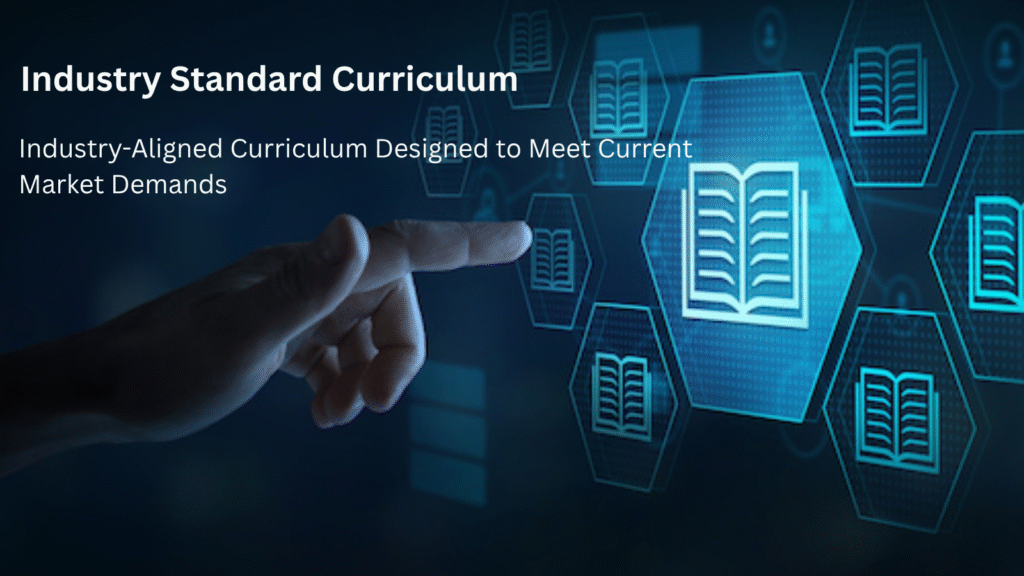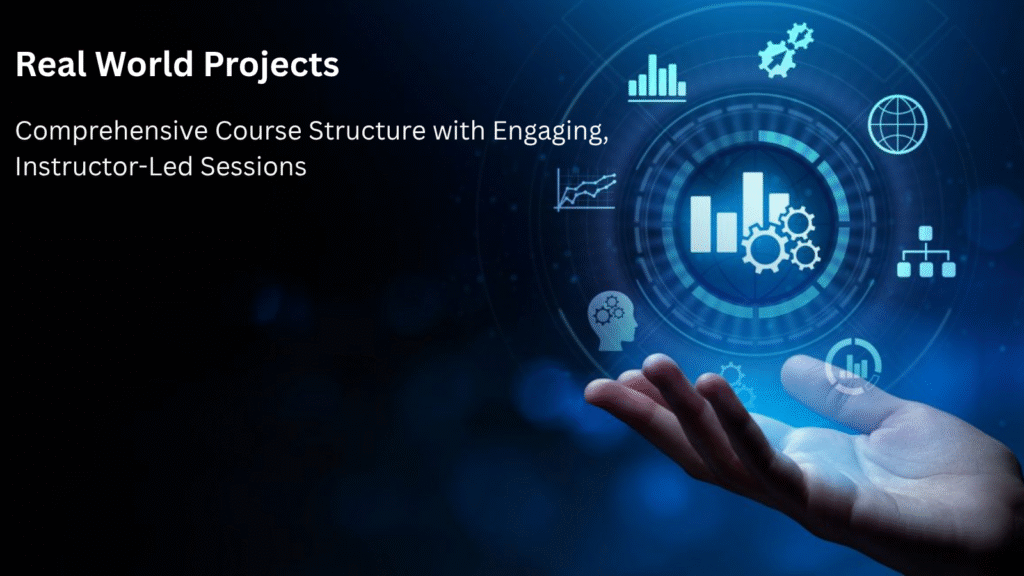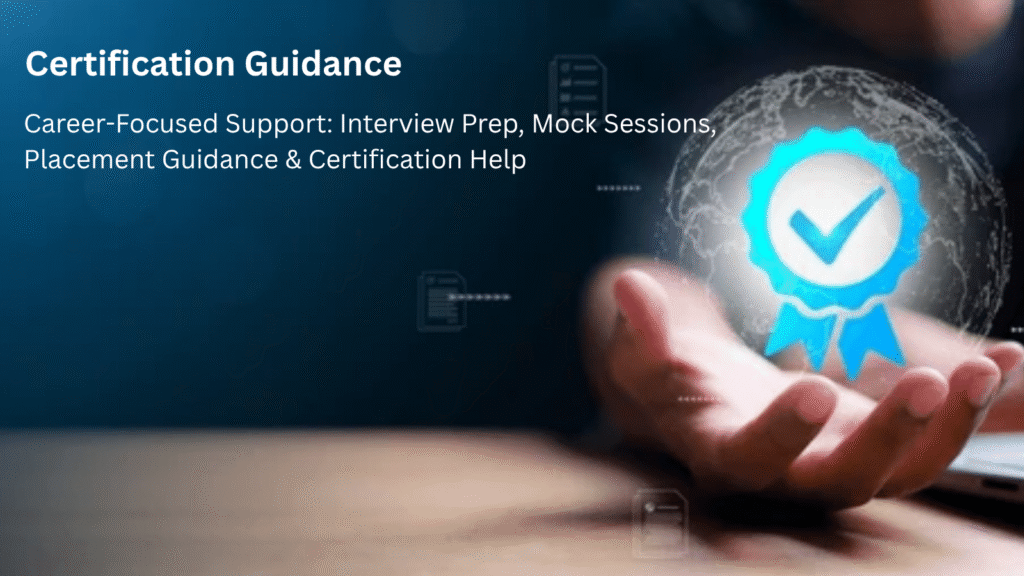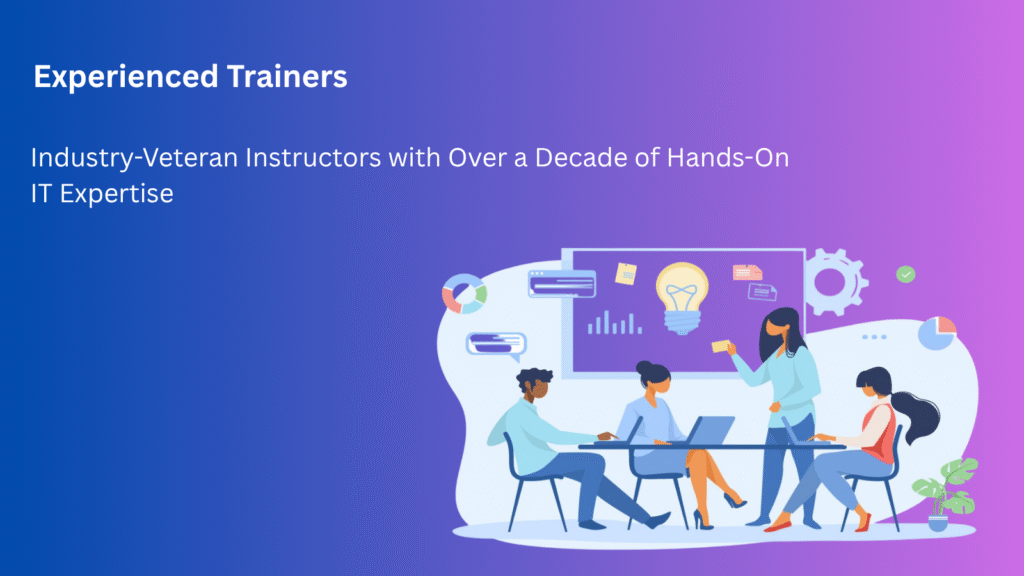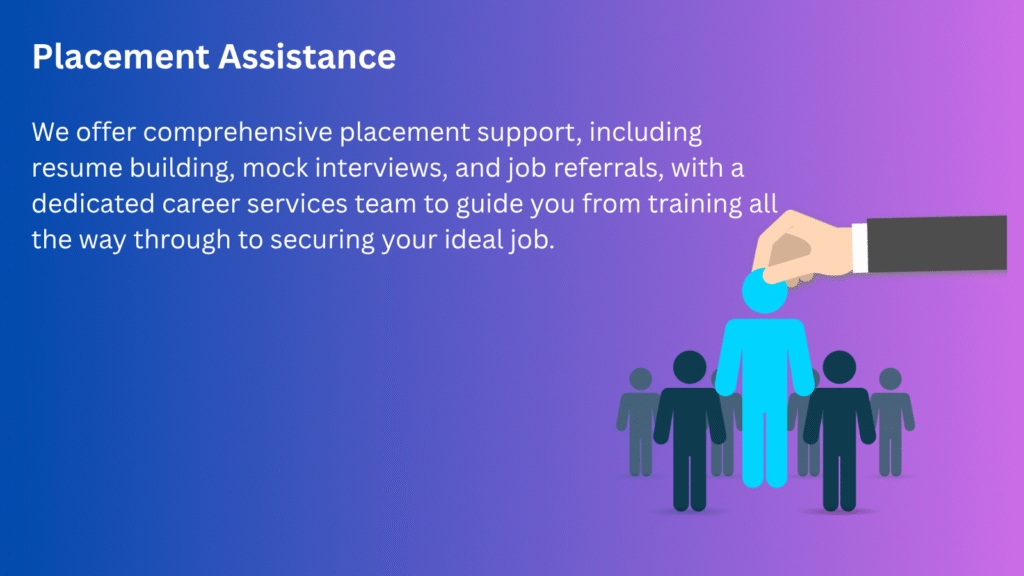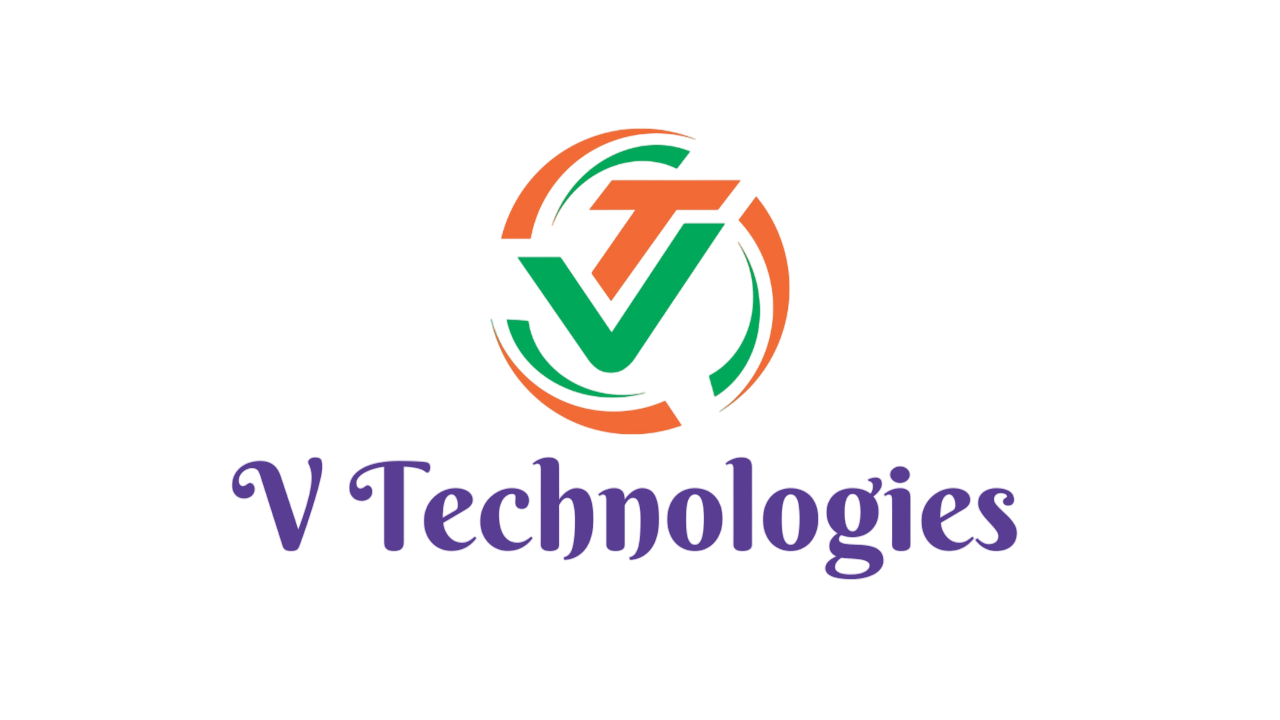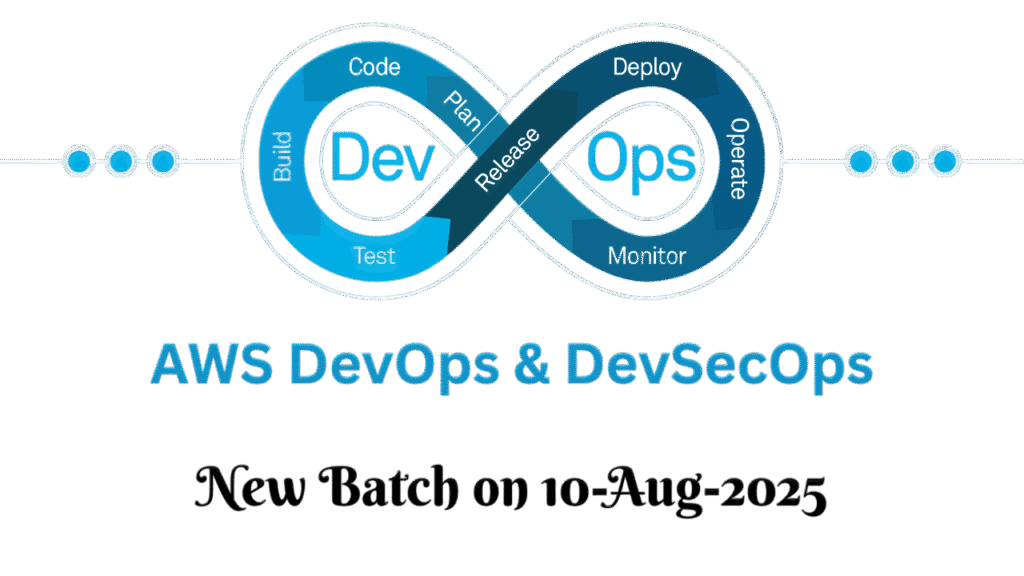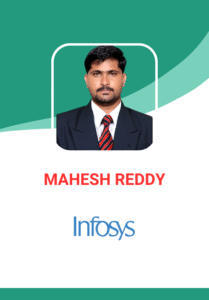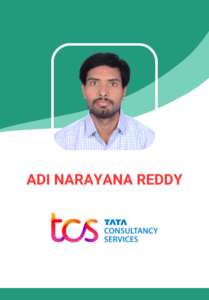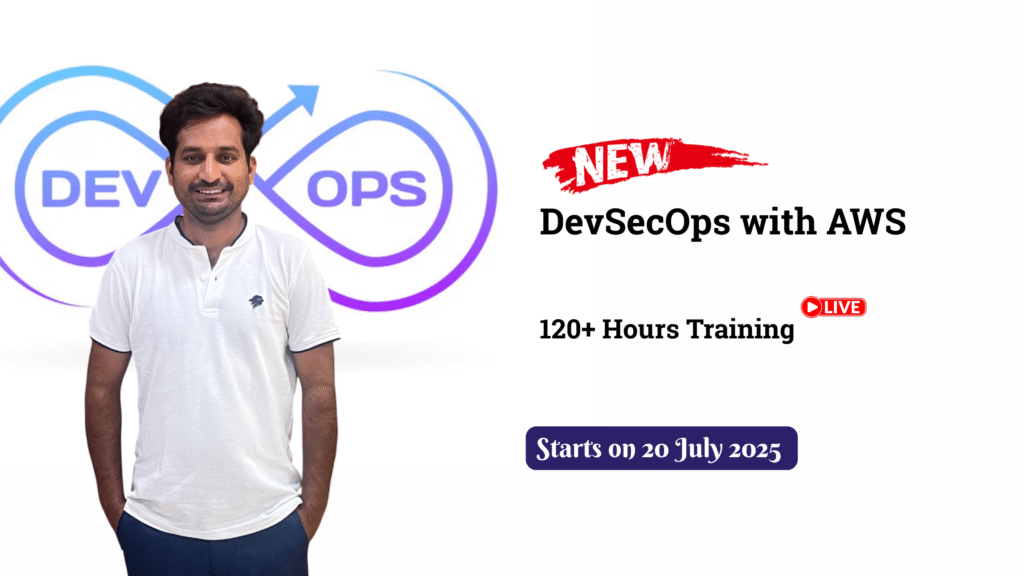We Assess
We carefully assess every student’s skill level and goals to recommend the most suitable learning path. Whether you're a beginner or upskilling, we guide you from day one.
Expert-Led Training
Our courses are taught by certified professionals with real-world industry experience. Learn hands-on with tools and practices used by top tech companies.
Career-Focused Approach
We don’t just teach — we mentor you toward certifications, job interviews, and placement opportunities. Your success is our mission.
We are Grateful for
Upcoming Batches
Latest DevOps course index
DevOps Introduction ♾️
- Getting Started with DevOps Concepts
- Exploring the Software Development Life Cycle (SDLC)
- The Waterfall Approach in Traditional SDLC
- Introduction to Agile Methodology
- Understanding the Scrum Framework
- Sprint and Iteration Cycles in Agile Development
- What is DevOps? A Cultural and Technical Transformation
- Why DevOps? Key Benefits and Drivers
- The Importance of DevOps in Today’s IT Ecosystem
- DevOps Operating Model Explained
- Phases of the DevOps Lifecycle
- DevOps in the Job Market – Roles and Opportunities
- Common DevOps Tools and Technologies
Linux
System Initialization
Introduction to the Linux Operating System
How to access or set up a Linux server
Installing essential tools on your desktop/laptop:
Putty
PuttyGen
Git Bash
WinSCP
Cloud & Virtual Environment Setup
Creating an account on AWS (Amazon Web Services)
Launching and connecting to an EC2 Linux Instance
Linux File System & Basic Commands
Understanding the Linux file and directory structure
Commands for:
File creation:
touch,cat,echoDirectory creation:
mkdirFile viewing:
cat,less,more,head,tailFile movement and copying:
cp,mv,rmNavigating directories:
cd,ls,pwd
Essential Linux Commands
Explore critical commands every Linux user must know:
ls– List files and directoriescd– Change directorypwd– Show current directory pathcp– Copy files or directoriesmv– Move or rename files/directoriesrm– Delete files/directoriestouch– Create empty filesmkdir– Create new directoriescat,less,more– View file contenthead,tail– View the beginning or end of fileschmod– Change file permissionschown– Change file ownershipgrep– Search for text patterns in filesfind– Locate files and directoriessed– Stream editing of file contentawk– Advanced pattern scanning & text processingdf– Check disk space usagedu– Display directory/file sizetop/htop– View running processesps– List active processeskill/killall– Terminate processeshistory– Show command historyman– Access help manual for commands
System Administration
User Management – Add, remove, and manage users and groups
Service Management – Start, stop, enable, or restart services using
systemctlPackage Management – Install and manage software using
yum,dnf, orapt
Automation & Scheduling
Crontab – Schedule and automate recurring tasks
Networking Basics
Learn the basics of Linux networking:
Check IP:
ip a/ifconfigPing hosts:
pingCheck ports:
netstat,ssNetwork troubleshooting:
traceroute,nslookup,dig
Git, GitHub, BitBucket
Introduction to Version Control
- What is VCS (Version Control System) / SCM (Source Code Management)
- Importance of using a Version Control System in real-world projects
Understanding Git, GitHub & BitBucket
- What is Git – A distributed version control system
- What is GitHub – A cloud-based Git repository hosting platform
- Creating and setting up a GitHub account
- Creating and setting up a BitBucket account
Git Basics & Concepts
- What is a Branch – Parallel versions of your code
- What is a Tag – Marking specific commits for releases or milestones
Core Git Commands & Operations
- Essential Git commands –
git init,git status,git add,git commit,git push, etc. - Cloning repositories from GitHub
- Merging branches effectively
- Working with Pull Requests (PR)
Advanced Git Features
- Using Cherry-Pick to apply specific commits
- Understanding and applying Squash to clean up commit history
- Forking a repository – Open-source contribution and collaboration
Branching Strategies
- Overview of popular branching models (e.g., Git Flow, Feature Branching, Trunk-Based Development)
- Best practices for managing branches in team environment
Maven
What is a Build Tool?
Introduction to Maven
Key Features & Benefits of Maven
Installing Maven & Setting up the Environment
Maven Project Directory Structure
Understanding the
pom.xmlFileMaven Repositories
Maven Life Cycles
Running different kind of Maven Projects
Building Your Project with Maven
Preparing Deployment Environment
Deploying the Maven Project
Apache Tomcat
Overview & Introduction
Differences Between Application Server and Web Server
Architecture of Web Servers, Application Servers, and Database Servers
Installation & Configuration on Linux
Directory Structure & File Organization
Starting the Apache Tomcat Server
Stopping the Apache Tomcat Server
User Account Management
Role-Based Access Control (RBAC)
Configuring Server Port Numbers
Application Deployment Methods:
Via Tomcat Manager Web Interface
Using Command Line Deployment Tools
Apache web server - Nginx Web Server
- Web Servers in Modern Architecture
- What is a Web Server?
▪ Understanding how web servers serve content to users over HTTP/HTTPS - Why use Apache HTTP or NGINX in today’s web stack?
- Apache vs NGINX – Key Differences
- Performance, architecture, and use cases comparison
- Real-World Use Cases
▪ Web hosting, reverse proxy, microservices, API gateways
Installing Apache and NGINX
- Apache HTTP Server Setup (Linux/Windows)
▪ Using package managers:yum,apt,choco - NGINX Installation: Fast and Lightweight
▪ Linux and Docker-based deployments - Version Check and Validation
▪ Commands:httpd -v,nginx -vto verify installations
Understanding Server Directory Structures
- Apache Core Directories
◦/etc/httpd/,/var/www/htmlexplained - NGINX Core Directories
▪/etc/nginx/,/usr/share/nginx/htmloverview - Key Config Files
▪httpd.conf,nginx.conf, and modular config structure
Managing Web Server Lifecycle
- Start, Stop, Restart Web Servers
▪ Commands for both Apache and NGINX - Common Commands
▪systemctl start|stop|restart httpd/nginx
▪service apache2 restart - Enabling Auto-Start on System Boot
▪ Ensuring web services persist after reboot
Hosting Static Web Applications
- Deploying HTML/CSS Websites
▪ Setting up static sites using Apache or NGINX - Document Root Deployment
▪ Placing files in/var/www/htmlor/usr/share/nginx/html - Permissions and Network Configuration
▪ File permission setup, opening ports in firewalls (e.g., port 80/443)
SonarQube
1. Introduction to Code Quality
- Importance of code quality in software development
- What is Static Code Analysis?
- Key benefits of using static code analysis tools
2. Overview of SonarQube
- What is SonarQube?
- Use cases in DevOps and CI/CD
- SonarQube Architecture (Scanner, Server, Database, UI)
- Supported languages and integration support (Maven, Gradle, Jenkins, etc.)
3. Installing and Setting up SonarQube
- System Requirements
- Installation on Linux/Windows
- Installing SonarQube using Docker
- Setting up PostgreSQL for SonarQube
- Running SonarQube Server and accessing the dashboard
4. SonarQube Configuration
- Creating Projects manually and auto-binding
- Generating and configuring authentication tokens
- Project settings – quality profiles and quality gates
- Understanding rules, severities, and customizations
5. Integrating SonarQube with Build Tools
- SonarQube with Maven (
sonar:sonarcommand) - SonarQube with Gradle
- SonarQube Scanner CLI for other languages
- Working with
.propertiesfile for configuration
6. SonarQube with Jenkins (CI/CD Pipeline Integration)
- Installing SonarQube Scanner Plugin in Jenkins
- Integrating analysis in Jenkins Pipeline
- Publishing results in Jenkins UI
- Breaking builds using quality gate status
7. Analyzing Results & Dashboards
- Understanding metrics: Bugs, Vulnerabilities, Code Smells, Coverage, Duplication
- Using the dashboard effectively
- Drill-down into issues and suggestions
- Code history and trend reports
8. Managing Quality Gates and Profiles
- Creating custom quality gates
- Defining thresholds for coverage, bugs, etc.
- Creating and assigning custom quality profiles
- Best practices in quality gate design
9. Advanced Topics (Optional)
- Integrating with GitHub, Bitbucket, GitLab
- Using Webhooks and notifications
- Setting up Branch analysis
- LDAP integration and user management
10. Real-Time Use Cases & Best Practices
- Real-world CI pipeline with SonarQube
- Handling common issues and misconfigurations
- Writing clean code with SonarLint
- Ensuring continuous inspection in teams
Nexus
🔰 Nexus Artifact Repository – Fundamentals & DevOps Role
What is Nexus?
▪️ A universal artifact repository manager for DevOps pipelines
Why Nexus in DevOps Toolchain?
▪️ Secure, store, and distribute build artifacts across environments
Real-World Nexus Use Cases
▪️ Caching Maven Central
▪️ Hosting internal Docker images
▪️ Dependency management in CI/CD workflows
Nexus Installation, Configuration & System Setup
Cross-Platform Installation
▪️ Linux (manual & systemd-based installation)
▪️ Windows (service mode setup)
Initial Security Hardening
▪️ Change default admin credentials (password & email)
SMTP Configuration for Notification System
▪️ Setup email alerts for repository and system events
Custom Port & Context Path Configuration
▪️ Modify default port (8081)
▪️ Change application context root (e.g., /nexus)
Service Management with Systemd and CLI
▪️ Start/stop Nexus using terminal or services
Nexus Architecture – Directory Structure & Configuration Files
Directory Hierarchy & Data Storage
▪️ Key paths: /nexus-data/, /opt/sonatype/
Admin Console Navigation
▪️ Accessing repositories, privileges, system tasks
Critical Configuration Files
▪️ nexus.properties, logging, and blob storage configuration
Repository Types – Creation, Configuration & Use Cases
Creating and Managing Repositories
▪️ maven2 (hosted) – Internal builds
▪️ maven2 (proxy) – Caching external repos like Maven Central
▪️ maven2 (group) – Aggregate proxy + hosted
▪️ Docker Registry – Private Docker image hosting
📌 Repository Strategy & Lifecycle
▪️ Artifact versioning, retention policies, and CI integration
DevOps Integration – Maven, REST API & Automation
Integrating Maven with Nexus
Configuring settings.xml for deployments
Artifact Centralization for CI/CD Pipelines
▪️ Hosting shared dependencies for distributed teams
Nexus REST API Automation
▪️ Programmatic access for repo creation, user management, and uploads
Repository Governance – Policies, Access Control & Security
Defining Cleanup & Retention Policies
▪️ Auto-prune old builds, keep latest versions only
User, Role & Privilege Management
▪️ RBAC – Role-Based Access Control for secure access
Jenkins
Jenkins Fundamentals & CI/CD Concepts
- What is Jenkins?
▪️ Open-source automation server for building, testing, and deploying applications - Understanding CI/CD Pipelines
▪️ CI: Automate code integration, build verification
▪️ CD: Continuous Delivery vs Deployment – key differences - Real-Time DevOps Use Cases
▪️ Microservices deployments, Infrastructure as Code automation, test automation triggers
Jenkins Installation & System Bootstrapping
- Cross-Platform Installation
▪️ Linux-based deployment (with systemd)
▪️ Jenkins setup on containers (Docker-based approach) - Initial Configuration
▪️ Admin password setup, plugin recommendations - Jenkins Home & Directory Overview
▪️ Workspace, job history, plugin cache
Build Jobs, Maven & Toolchain Integration
- Creating Build Jobs
▪️ Freestyle project setup for Java builds - Maven Integration
▪️ Set global tool configurations, define Maven installation paths - Artifact Repository Integration
▪️ Upload artifacts to Nexus/Artifactory - Code Quality Integration
▪️ Connect SonarQube server, analyze code post-build
Application Deployment Automation
- Deploy to Web Servers
▪️ Use “Deploy to Container” plugin for Tomcat
▪️ SSH-based scripted deployment with credentials plugin - Integrate Notifications & Hooks
▪️ Slack alerts via webhook token
▪️ Git SCM polling, CRON-based triggers
▪️ GitHub Webhook payload configuration
Build Lifecycle & Output Control
- Retention & Cleanup Strategies
▪️ Discard old builds, clear workspace - Enhance Console Logs
▪️ Timestamps, ANSI coloring plugins - Test Coverage Analysis
▪️ JACOCO or Cobertura plugin configuration
Plugin Ecosystem & Jenkins Enhancements
- Plugin Management
▪️ Plugin Manager, safe restarts - Essential Integrations
▪️ BlueOcean, SSH Agent, Publish Over SSH
▪️ Thin Backup, Email Ext, Role-Based Access Strategy - Job Conversion & Efficiency
▪️ Convert Freestyle jobs to pipeline jobs
▪️ Next build number plugin, workspace cleanup
Jenkins Security & Role-Based Access Control
- User Authentication & Authorization
▪️ Enable security realm, create users - Granular Access Control
▪️ Role-based access plugin
▪️ Project-based Matrix Authorization - Auditing Best Practices
▪️ Jenkins log inspection, access logs
Views, Parameters & Integration Tools
- Job Organization with Views
▪️ MyView, List View - Parameterized Builds
▪️ Add string, boolean, and choice parameters - External Tools & Plugins
▪️ Install plugins for Ansible, Blue Ocean, Docker, or Terraform
Jenkins Pipeline (Scripted & Declarative)
- Understanding Pipeline as Code
▪️ Scripted vs Declarative Syntax - Jenkinsfile Authoring
▪️ Add to project repo, syntax validation - Pipeline Features
▪️ Parameters, post-actions, parallel stages - Multibranch Pipeline Projects
▪️ Auto-discover branches, PR builds - Shared Libraries
▪️ Reuse common pipeline logic across teams
Jenkins Administration & Real-Time DevOps Execution
- CI/CD Pipelines for Microservices/Java Apps
▪️ Build, test, deploy to Kubernetes or VMs - Master-Agent Architecture
▪️ Set up agents (static/dynamic), node labels - Backup, Restore & Migration
▪️ Jenkins ThinBackup or script-based backup strategy
▪️ Server migration (old to new Jenkins) - Real-Time Pipeline Examples
▪️ Real time declarative scripts for end to end application flows
Ansible
Ansible Fundamentals
- What is Ansible?
▪️ Open-source IT automation engine for configuration management, application deployment, and orchestration - Ansible’s Role in DevOps Pipelines
▪️ Automates repetitive tasks, enforces environment consistency, and accelerates delivery cycles - Key Advantage: Agentless Automation
▪️ Uses SSH (Linux) and WinRM (Windows) without needing agent installations on managed nodes
Core Architectural Concepts
- Foundations of Configuration as Code (CaC)
▪️ Maintain infrastructure consistency through declarative definitions - Notable Features of Ansible
▪️ Idempotency, YAML simplicity, extensibility via custom modules - Ansible Component Overview
▪️ Control Node (execution hub)
▪️ Managed Hosts (target nodes)
▪️ Modules, Plugins, Connection Types, and Collections
Inventory & Installation
- Defining Host Inventory
▪️ Static INI/YAML files and Dynamic Inventory via cloud plugins (AWS, Azure, GCP) - Ansible Setup
▪️ Installing via package managers (yum, apt, pip)
▪️ Using virtual environments for version control - Directory Layout Best Practices
▪️/etc/ansible, project-specific inventory files, role-based structure
CLI Mastery & Modules
- Essential Ansible Commands
▪️ansible,ansible-playbook,ansible-config,ansible-doc,ansible-inventory - Verifying Infrastructure Reachability
▪️ Inventory validation withpingmodule and ad-hoc command execution - Module Categories
▪️ System (copy, file), Package (yum, apt), Service (systemd), Cloud (ec2, gcp_compute)
Playbook Engineering
- Crafting Declarative Playbooks
▪️ YAML-based syntax for structured automation tasks - Anatomy of a Playbook
▪️ Plays → Tasks → Modules → Handlers - Execution Controls
▪️ Tags for selective task execution
▪️ Error handling and retries
▪️ Handlers to trigger on change
Variables, Loops & Logic
- Hierarchical Variable Precedence
▪️ Host, Group, Playbook-level, Environment variables - Variable Declarations
▪️vars,vars_files,vars_prompt, host_vars/group_vars - Control Structures
▪️ Loops:loop,with_items,with_dict
▪️ Conditionals:when,failed_when,changed_when - Combining Logic for Dynamic Automation
Secrets & Secure Automation
- Introduction to Ansible Vault
▪️ Encrypt variables, files, or entire playbooks - Creating & Managing Encrypted Files
▪️ Vault CLI usage:ansible-vault create/view/edit - Vault Key Handling
▪️ Vault password files and environment variable integration
Modularization with Roles
- Role-Based Directory Structure
▪️ Break down complex playbooks into reusable components - Refactoring Playbooks into Roles
▪️ Defaults, vars, tasks, handlers, templates, and meta - Best Practices for Role Usage in Projects
▪️ Role dependencies, using Galaxy roles, importing custom logic
Dynamic Inventory & Cloud Integration
- Scaling Beyond Static Inventory
▪️ Query live infrastructure with dynamic inventory scripts/plugins - Cloud Integrations
▪️ Use AWS EC2, Azure Resource Manager, and GCP inventory plugins for auto-discovery - Managing Inventory Sources in Production
▪️ Configuring inventory plugins viaansible.cfgandinventory.yam
Docker
Introduction to Docker & Containerization Concepts
- Overview of Docker Technology
Understanding containerization fundamentals and its impact on modern software development. - Containers vs. Traditional Virtual Machines
Exploring lightweight, portable containers compared to resource-heavy virtual machines. - Docker’s Role in DevOps and Cloud Native Environments
How Docker streamlines CI/CD pipelines, microservices deployment, and scalability. - Real-World Use Cases and Industry Adoption
Examining Docker’s application in development, testing, and production environments. - Evolution of Application Deployment: Pre-Docker vs Post-Docker
Challenges of legacy deployment methods versus container-driven agility.
Docker Installation & Core Architecture
- Installing Docker Across Various Operating Systems
Step-by-step guidance for Linux, Windows, and macOS installations. - Deep Dive into Docker Architecture
Components including Docker Engine, Docker Daemon, CLI, REST API, and container runtime. - Container Lifecycle and Docker’s Operational Flow
How Docker builds, runs, and manages containerized applications.
Essential Docker CLI Commands & Container Management
- Core Docker CLI Commands
Running containers (docker run), listing (docker ps), executing (docker exec), logs (docker logs). - Image and Container Lifecycle Management
Creating, tagging, removing images, and managing container states (start, stop, pause). - Inspecting and Debugging Containers
Usingdocker inspect, monitoring resource usage, and troubleshooting tips.
Dockerfile Mastery & Custom Image Creation
- Understanding Dockerfiles and Their Purpose
Declarative instructions to automate image creation. - Detailed Exploration of Dockerfile Instructions
FROM,RUN,COPY,ADD,CMD,ENTRYPOINT,ENV,VOLUME,EXPOSE, and best practices. - Building and Optimizing Custom Docker Images
Layer caching, minimizing image size, and multi-stage builds. - Hands-On Dockerfile Examples
Creating Dockerfiles for Node.js, Python, Java applications.
Core Docker Objects & Networking Essentials
- Docker Images and Containers Explained
Immutable image layers vs. running container instances. - Networking in Docker
Understanding network drivers: bridge, host, overlay, macvlan. - Persistent Storage with Docker Volumes and Bind Mounts
Managing data persistence beyond container lifecycle.
Docker Registries & Image Distribution
- Introduction to Docker Registries
Central repositories for storing and sharing container images. - Working with Docker Hub
Pushing, pulling, and managing public/private images. - Private Registries & Cloud Integration
Using AWS ECR, Azure Container Registry (ACR), Google Container Registry (GCR).
Docker Compose & Multi-Container Orchestration
- Introduction to Docker Compose
Defining and managing multi-container applications withdocker-compose.yml. - Compose File Syntax and Configuration
Services, networks, volumes, environment variables, dependencies. - Running and Managing Compose Applications
Commands likedocker-compose up,down,logs, scaling services. - Practical Example: Deploying a Web Application with Database
Building a multi-service stack to demonstrate real-world orchestration.
Trivy
Introduction to Trivy
- What is Trivy?
- Features of Trivy
- Use cases in DevSecOps
Installation & Setup
- System requirements
- Installation on Linux, macOS, Windows
- Running Trivy using Docker
- Updating the vulnerability database
Scanning Docker Images
- Basic scan command
- Severity levels (UNKNOWN, LOW, MEDIUM, HIGH, CRITICAL)
- Filtering by severity
- Output formats: table, JSON
File System & Repository Scanning
- Scanning local file system
- Scanning public Git repositories
Infrastructure as Code (IaC) Scanning
- Supported IaC formats: Terraform, Kubernetes, Dockerfile
- Scanning configuration files
Ignore Rules
.trivyignorefile- Ignoring specific CVEs
CI/CD Integration
- Trivy in Jenkins
Hands-on Exercises
- Install and configure Trivy
- Scan a Docker image
- Scan a local project
- Scan Terraform/K8s files
- Use a
.trivyignorefile
Kubernetes
Introduction & Core Concepts
Fundamentals of Kubernetes and Container Orchestration
Kubernetes System Components & Control Plane Architecture
Bootstrapping a Kubernetes Cluster Using
kubeadmNamespaces: Multi-Tenancy and Resource Isolation
Overview of Kubernetes Workloads and API Objects
Core Workload Controllers
Understanding Pods: The Smallest Deployable Unit
ReplicationController & ReplicaSet: Ensuring Desired Pod State
DaemonSets: Running System-Level Pods on Every Node
StatefulSets: Managing Stateful Applications with Identity and Storage
Storage & Configuration Management
ClusterIP, NodePort, and LoadBalancer Services
PersistentVolumes (PV) and PersistentVolumeClaims (PVC)
Dynamic Volume Provisioning with StorageClasses
ConfigMaps & Secrets for Decoupled Configuration and Secure Data Injection
Kubernetes Deployment Strategies
Recreate vs RollingUpdate Deployments
Blue-Green Deployment Strategy
Canary Releases: Progressive Delivery with Fine-Grained Control
A/B Testing Deployments: Feature Validation at Scale
Shadow Deployment: Silent Traffic Mirroring for Safe Testing
Monitoring, Health Checks & Autoscaling
Horizontal Pod Autoscaler (HPA) with Metrics Server Integration
Resource Metrics Collection & Auto-tuning Workloads
Liveness and Readiness Probes: Application Health & Availability
Scheduling & Node Operations
Pod Scheduling via NodeSelector & Node Affinity Rules
Pod Affinity and Anti-Affinity: Intelligent Placement Strategies
Taints and Tolerations: Controlling Pod Placement with Constraints
Node Lifecycle Operations: Cordon, Drain, and Uncordon
Advanced Scheduling Policies and Priorities
Security, Policies & Resource Governance
ResourceQuota and LimitRange for Resource Consumption Control
Kubernetes Role-Based Access Control (RBAC): Managing User Permissions
NetworkPolicies: Enforcing Layer 3/4 Network Segmentation
Pod Security Context and Security Best Practices
Kubernetes on Cloud & Traffic Management
Provisioning a Managed Kubernetes Cluster with Amazon EKS
Configuring Kubernetes Services for External Access
Ingress Controller & Ingress Resource for HTTP Routing & TLS Termination
Continuous Delivery & Helm
CI/CD Pipeline Integration with Jenkins and Kubernetes
Packaging and Deploying Applications using Helm Charts
Managing Application Releases and Rollbacks via Helm
Observability & Logging
- Cluster Monitoring with Prometheus and Grafana Dashboards
- Centralized Logging with the EFK Stack:
Elasticsearch for Log Storage & Search
Fluentd for Log Aggregation
Kibana for Visualization
Logging (Grafana and Prometheus)
Introduction of Monitoring
What is monitoring?
Why do we need monitoring tools?
Overview of Prometheus and Grafana
Prometheus Basics
What is Prometheus?
Prometheus architecture (simple explanation)
How Prometheus collects data (scraping)
Introduction to Prometheus metrics (CPU, memory, etc.)
Running Prometheus on your system
Grafana Basics
What is Grafana?
Grafana as a visualization tool
Connecting Grafana to Prometheus
Creating simple dashboards and graphs
Hands-On Practice
Install Prometheus and Grafana (locally or using Docker)
Use Node Exporter to collect system metrics
Create a simple Grafana dashboard to monitor:
CPU usage
Memory usage
Disk usage
Introduction to Alerts
What are alerts?
Creating alerts in Grafana
AWS
Cloud Computing Fundamentals
- Introduction to Cloud Architecture
- Cloud Deployment Models (Public, Private, Hybrid, Multi-Cloud)
- Cloud Service Models (IaaS, PaaS, SaaS)
AWS Overview
- Significance of Amazon Web Services in Modern Infrastructure
- AWS Global Infrastructure: Regions, Availability Zones, Edge Locations
- Shared Responsibility Model
Core AWS Services
- Amazon EC2 (Elastic Compute Cloud) – Scalable Virtual Machines & Instances
- Amazon VPC (Virtual Private Cloud) – Isolated Network Environment
- VPC Peering – Interconnecting VPCs for Secure Traffic Flow
- AWS Transit Gateway – Centralized Network Hub for VPC and On-Premise Connectivity
- AWS IAM (Identity and Access Management) – Fine-Grained Access Control Policies
- Elastic Load Balancer (ELB) – Layer 4 & Layer 7 Load Distribution
- Auto Scaling Groups – Dynamic Resource Scaling and High Availability
- Elastic IP Address – Static IPv4 for Dynamic Cloud Architectures
- Amazon Machine Image (AMI) – Preconfigured Launch Templates for EC2
- Amazon S3 (Simple Storage Service) – Object Storage with High Durability
- Amazon CloudWatch – Centralized Monitoring, Logging, and Alarming
- AWS CloudTrail – Governance, Compliance, and API Activity Tracking
- Amazon CloudFront – Global Content Delivery Network (CDN)
- Amazon RDS (Relational Database Service) – Managed Relational Databases
- Amazon SNS (Simple Notification Service) – Push-Based Messaging & Notifications
Terraform
Introduction to Infrastructure as Code (IaC)
- Terraform Overview: HashiCorp’s Open-Source IaC Tool
- Advantages & Limitations of Terraform in Multi-Cloud Environments
- Terraform’s Declarative Syntax for Infrastructure Automation
- Comparative Analysis: Terraform vs Alternatives (Pulumi, AWS CDK, Ansible, CloudFormation)
- Real-World Use Cases of Terraform in DevOps Pipelines & CI/CD
Terraform Setup & Initialization
- Terraform Installation: CLI Tools on Windows/Linux/macOS
- Initializing Terraform Workspace & Execution Environment
- Deploying Your First Terraform Configuration File
Core Components of Terraform
- Terraform Providers: Cloud Vendor SDK Integrations (AWS, Azure, GCP)
- Terraform Registry: Public Modules & Provider Repository
- Terraform Resources: Defining Infrastructure Blocks (compute, networking, storage)
- Terraform Modules: Reusable Configuration Constructs (Intro only)
Terraform CLI & Execution Lifecycle
- terraform init – Provider Plugin Initialization
- terraform validate – Syntax and Logical Validation
- terraform plan – Execution Plan Preview
- terraform apply – Infrastructure Provisioning
- terraform destroy – Tear Down Resources
Resource Management & Configuration
- Updating & Reconfiguring Resources After Deployment
- Adding and Switching Between Multiple Providers
- Managing Terraform State Files: Local vs Remote Backend
HashiCorp Configuration Language (HCL) Essentials
- Syntax Patterns and Style Guidelines in HCL
- Meta-Arguments in HCL:
depends_on– Resource Dependency Orderingcount– Resource Scalingfor_each– Iterative Resource Creationprovider– Specifying Cloud Providerslifecycle– Resource Lifecycle Control (create_before_destroy, prevent_destroy)
Variables and Data Abstraction in Terraform
- Understanding Terraform Variable Types and Scopes
- Input Variables: Dynamic Parameter Injection
- Output Values: Sharing Data Between Modules or Stages
- Local Values: Inline Variable Transformations
- Best Practices: Declaring Variables in
variables.tfandterraform.tfvars
Cloud Resource Provisioning
- Provisioning Compute Resources (EC2, VM, GCE) via Terraform
- Using Terraform for Cloud-Native Resource Orchestration Across AWS, Azure, GCP
Key Points of the DevOps Master Program
Structured Interview Preparation from Day One
24/7 Expert Trainer Support
Real-Time Project Experience
Hands-On Learning Approach
Alumni Referral Network for Placement Support
Why VTechnologies
